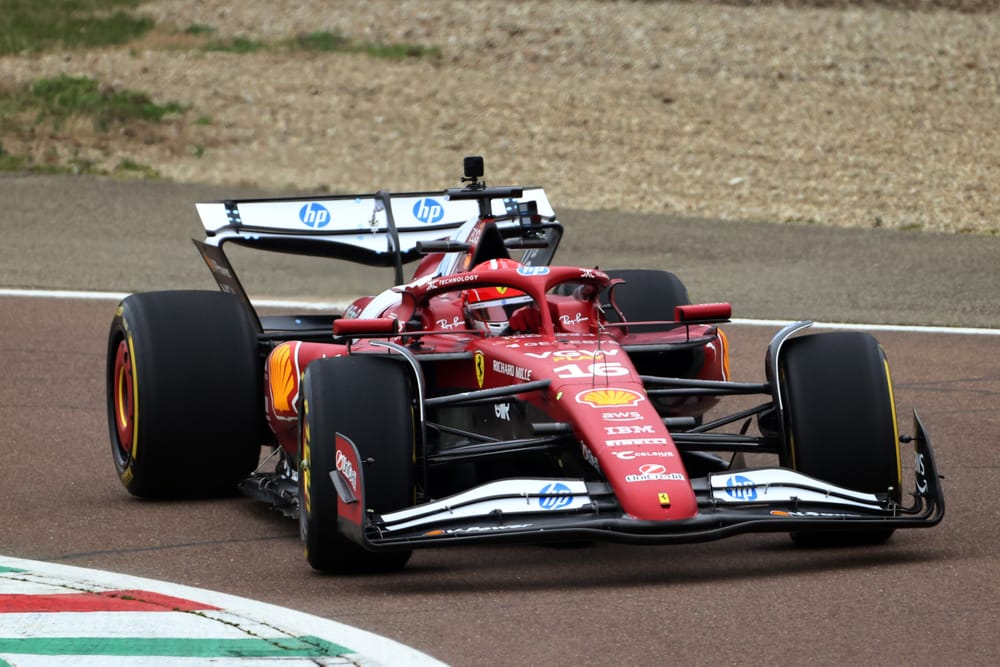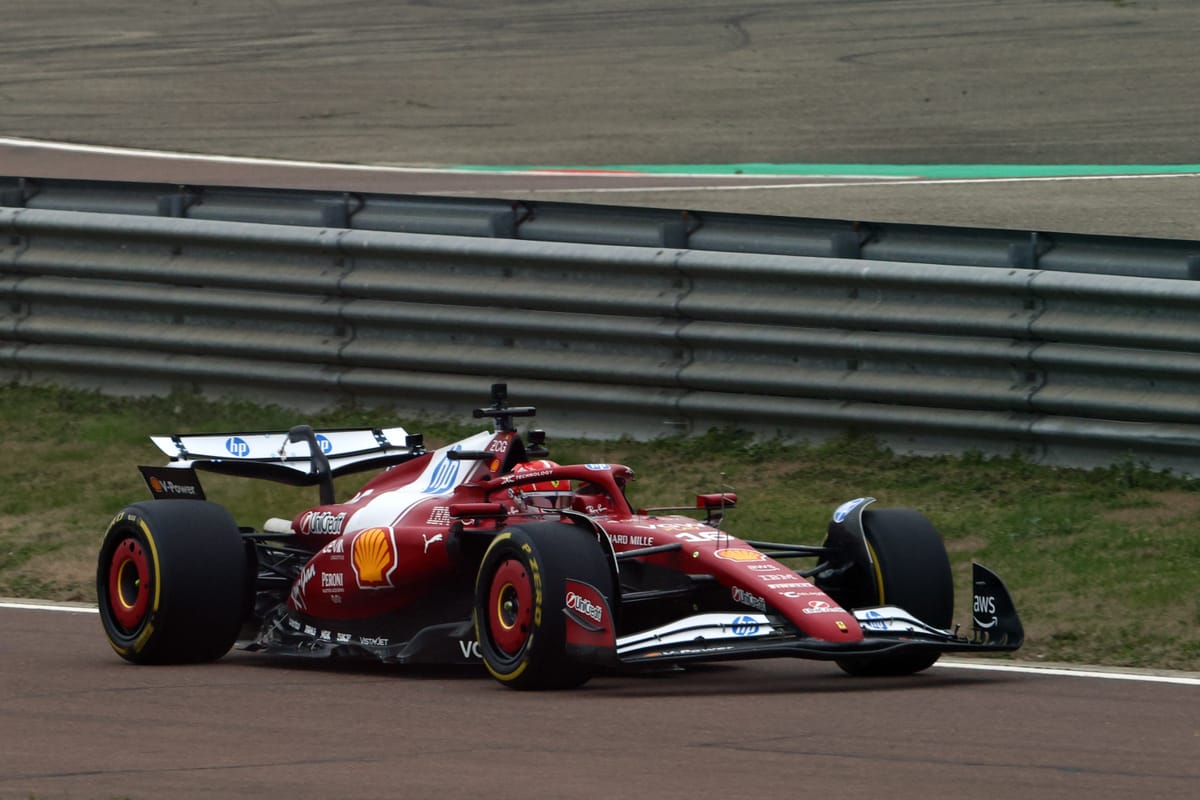The new Ferrari Formula 1 car has now hit the track and what's on show at Fiorano seems to be pretty consistent with the renders the team released of the SF-25, although there are no guarantees that this is what we will see in Bahrain when the cars start running for pre-season testing.
Before we get started we should read through what the team itself has said: first of all an overview of the changes and secondly comments from chassis technical director Loic Serra, who joined Ferrari from Mercedes towards the end of last season.
Ferrari says "the most visible change" on this car compared to 2024 is the switch from pushrod to pullrod front suspension.
The justification given for this change is to "clean up the airflow around the car", which also gives "greater scope for further aero development, which had pretty much been exhausted with the previous iteration".
Serra says Ferrari has changed "99% of the car" for 2025 and says this new suspension configuration is "only the most obvious of many significant changes".
A wheelbase change
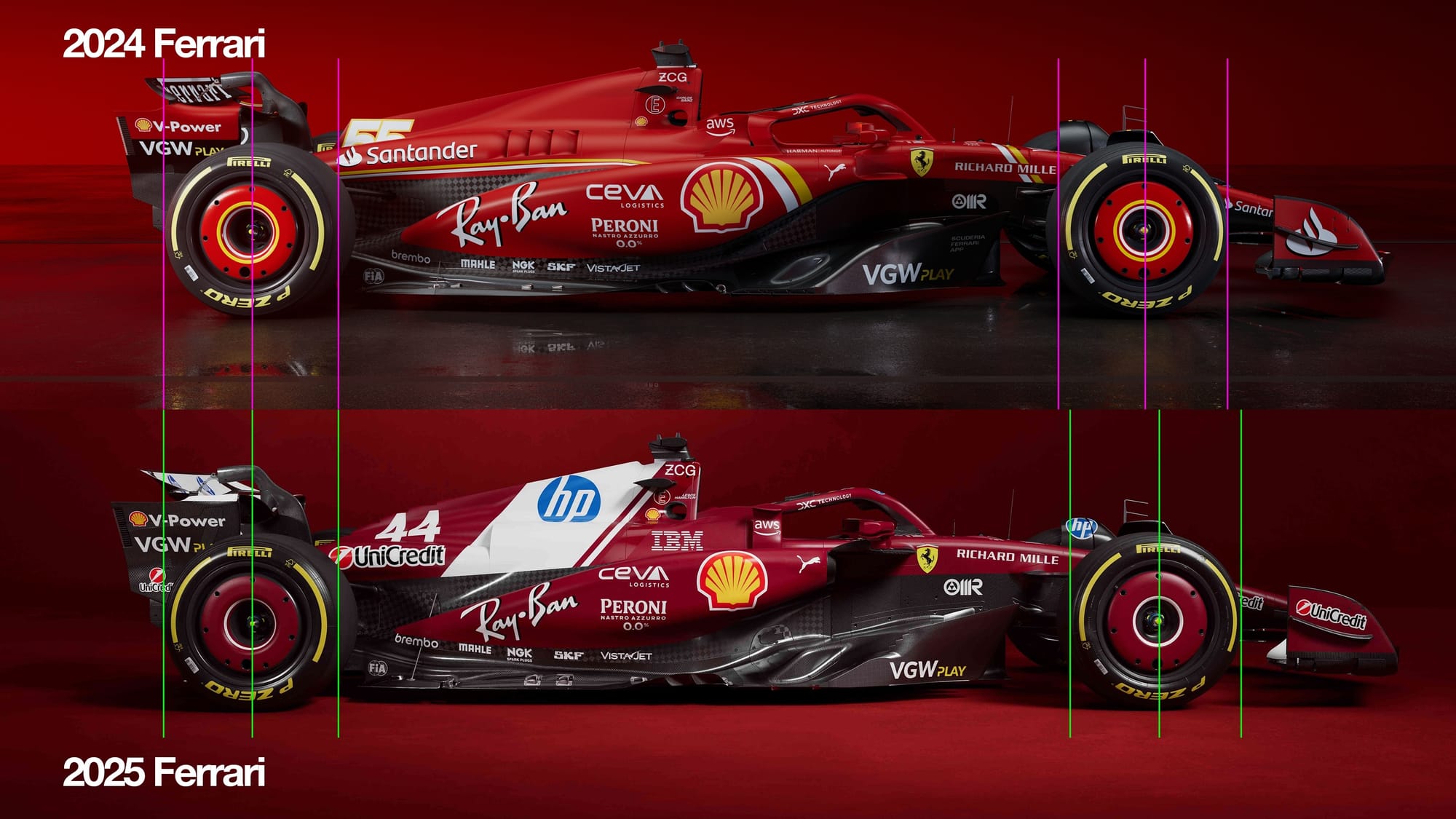
It looks like Ferrari has slightly lengthened the wheelbase by moving the front wheels forward.
This creates more space between the front of the sidepod and the wheel, giving a better opportunity to control the front wheel wake and therefore reducing its negative effect on the leading edge of the underfloor.
Front suspension

Ferrari has gone to the pullrod (blue line above) front suspension - a direction not followed by customer team Haas - and as Serra says, this is mainly for aerodynamic optimisation and to allow further areas and direction for development.
To help clean up that area it has also integrated the front trackrod (green highlight on the 2024 car above). It is probably within the forward leg of the lower wishbone.
Ferrari has nowhere near as high a level of anti-dive (yellow arrow below) on the front suspension rear leg inboard pick-up as McLaren. However McLaren needs to prove that what it has gone for still gives the drivers the feel they need to optimise braking.
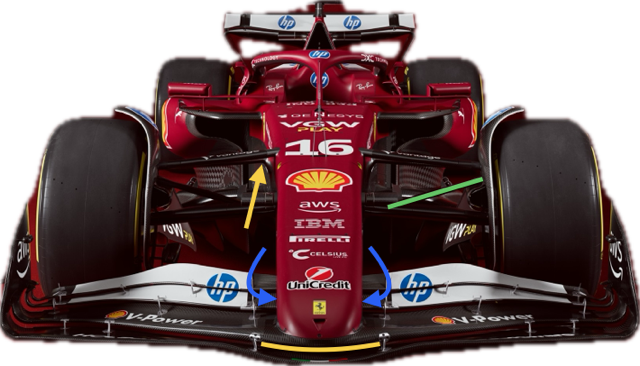
Front wing
There's no big difference from last year, but for me the nose is fairly wide and boxy (blue arrows above) just where the front wing attaches to it.
This is not such a big problem as Ferrari has also continued with the slot gap (yellow line above) between the nose and the front wing's most forward element.
This allows airflow through this area to flow up the underside of the nose and introduce as high a level of mass flow as possible to the central section of the underfloor.
Sidepod and radiator
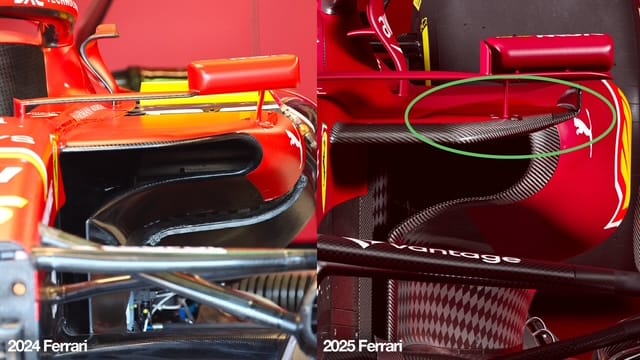
The radiator inlet area is larger than last year. I think this comes about from the thinking that it could be a competitive season and that when running in traffic you need to make sure you can cool the car.
It is slightly more integrated with the body surfaces, which is no bad thing; sharp corners or changes in the surface can very easily create airflow separation pockets.
It still retains the upper surface covering the inverted L-shaped inlet but the outer end of it is now more of a turning vane (green highlight above).
Want more from Gary Anderson? Join The Race Members' Club on Patreon now and get early access to many of his columns plus ad-free versions of The Race F1 Tech Show podcast with Gary and Edd Straw - there's 90% off your first month if you join now
With the outer corner arranged with this flick up, it will generate a vortex off that corner which will go over the sidepod upper-corner surface. This could reduce the spillage off the top of the sidepod into the 'coke bottle' area where the bodywork narrows at the rear of the car.
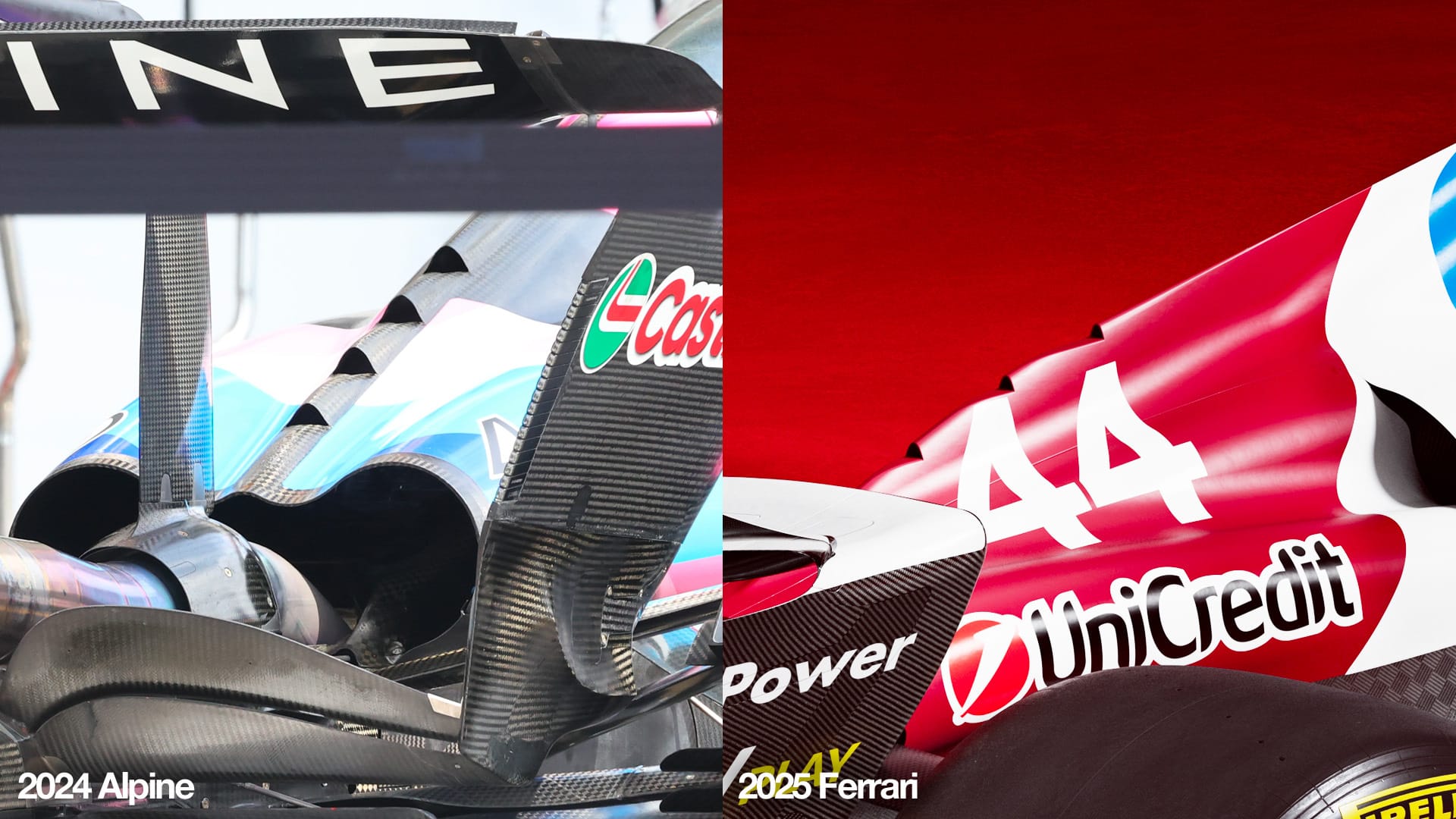
Having a larger radiator inlet is one thing but you need a larger exit to go with it. You can't really push the airflow through the radiator - you need to pull it by creating a pressure drop across the radiator core. To achieve this, Ferrari has incorporated some small openings along the spine of the engine cover.
These are very similar to the version used by Alpine and a few other teams last year, as the comparison above shows.
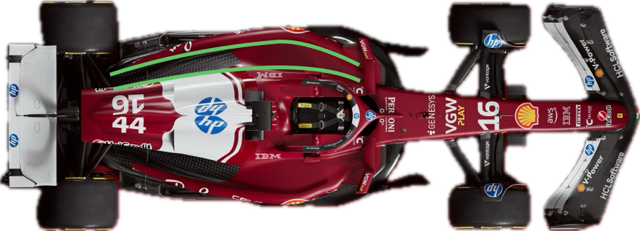
Ferrari has extended the gully section on the top surface of the sidepods (green highlight above), which now gives the car an outer raised section that is not dissimilar to the 2022 version.
This will contain the airflow over the top surface and improve the airflow into the centre of the car at the rear, helping both the beam wing performance and the diffuser at very low ride heights.
Rear suspension
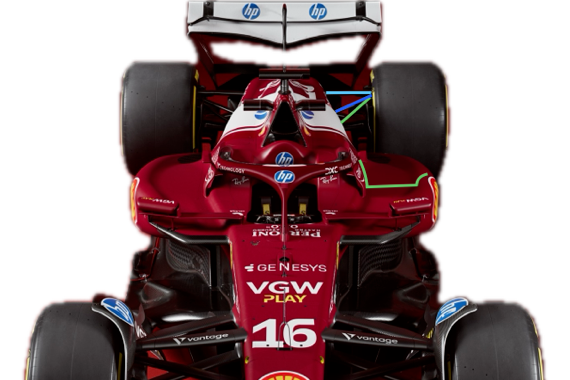
As last year, Ferrari has retained the pullrod operated rear suspension (green line above).
The top wishbone forward leg (blue line above) inboard pick-up looks reasonably low, so it should increase the anti-lift to keep the rear of the car lower under braking. For reference, the rear leg is shown with the light blue line.
As the team has indicated, this is an evolution as opposed to a revolution - but there are subtle changes and I'm pretty sure a lot more that we can't see on the renders and pictures so far.
It will be interesting to see between the top four teams who has made the biggest step - you never know, there might even be a team outside the top four from 2024 that will join them.
Pre-season testing is going to be interesting and I'm pretty sure we will come out of it with no better idea of who is fast and who is not than we have right now.
Australia is only a month away and everyone will have to put their cards on the table there.

